OS 8 Now Available in Early Access
Plus a new version of Code
I’m super excited to let you know that OS 8 builds are available in Early Access and they are now installable! While we highly recommend you don’t run these experimental builds in production, they’re perfect for trying in a virtual machine or a spare computer. Early Access is a great way to help us test new features and find bugs before they roll out to everyone. If you’re not already in early access, you can be among the first to try it and give your feedback by joining Early Access for as little as a $1/mo sponsorship. Again beware that Early Access builds are not considered stable and you will encounter fresh issues when you run them. We’d really appreciate reporting any problems you encounter with the Feedback app or directly on GitHub.
System Updates
The headlining feature this month is the brand new mechanism for operating system updates. Instead of being a part of updates in AppCenter, system updates now live in the System page of System Settings. The new updates mechanism is super fast and includes an option to download updates automatically. It will also let you know explicity if security updates are part of the updates package. Shoutouts to Leonhard for his work here.
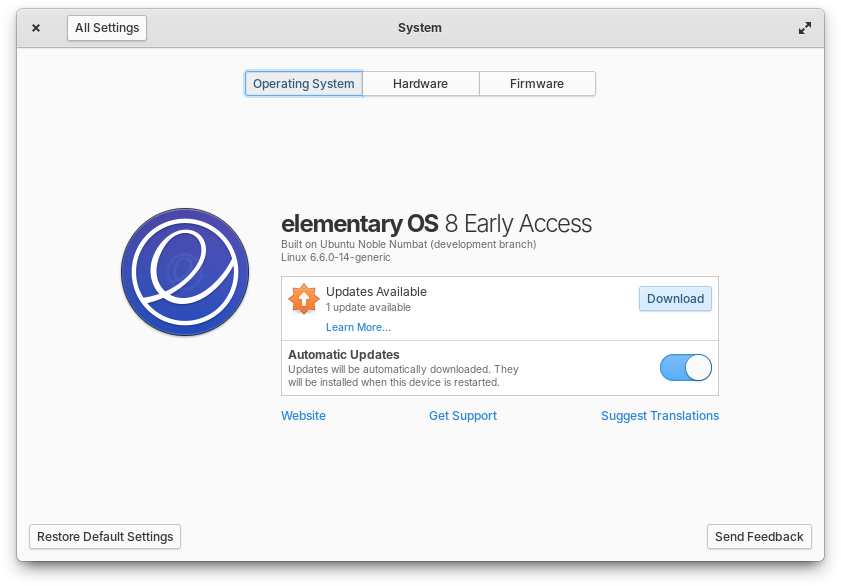
System updates now live in System Settings and can be updated automatically
There’s a few reasons why we would want two separate update mechanisms in elementary OS. Under the hood, apps in elementary OS are Flatpak packages and system packages are managed by PackageKit. Flatpak apps are sandboxed from the system and can be reliably updated while your computer is running. System packages are best installed offline, when your computer restarts, to make sure services are restarted correctly and to prevent issues. By splitting apart the updates experience, it is much clearer which updates will require you to restart your computer: app updates in AppCenter will never require a restart, while system updates in System Settings will always require a restart. It also makes the underlining code much less complex and speeds up processes like checking for new updates. It also means an error in one system won’t cause updates in the other system to fail. Overall the updates experience in OS 8 will be faster, more reliable, and easier to understand, as well as being easier to automate.
System Settings
Search in System Settings has been improved to return more relevant results and the titles of those results now reflect both the exact setting name they are matching and the path to that setting.
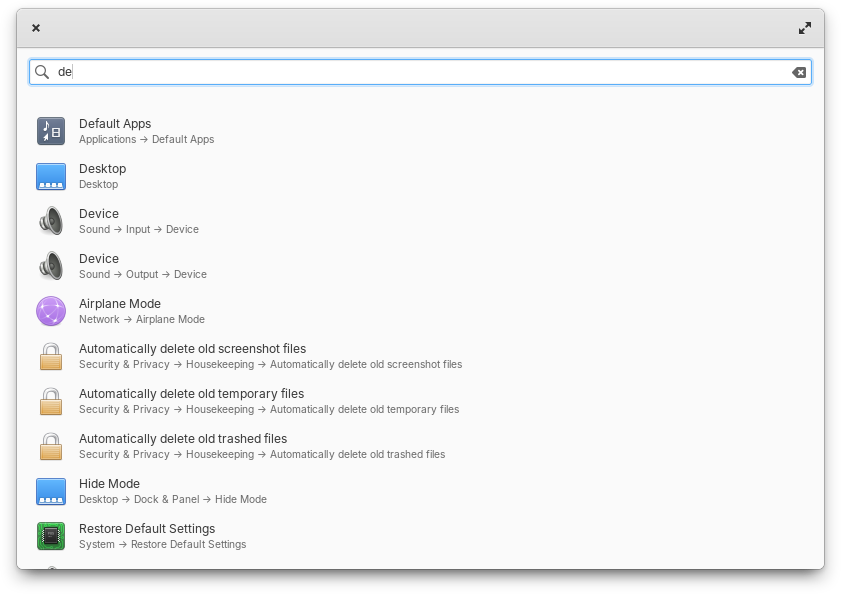
Search in System Settings now ranks results better
Shortcuts settings now include a new “Keyboard Layouts” section where you can set a custom shortcut to change keyboard layouts as well as change the shortcuts for emoji and unicode typing modes. And some cleanup was done in Mouse & Touchpad settings to make layouts more responsive, provide additional explanation text, and improve screen reader support.
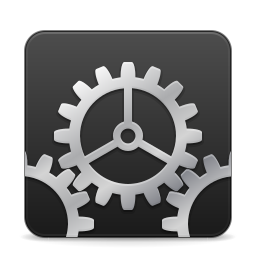
System Settings has a new app icon
Plus we’re using a new SettingsPage widget to improve consistency between settings views, and System Settings got an icon redesign. Finally, we’ve almost wrapped up porting System Settings to GTK 4; Network and Printer settings are in review, and Display settings is partially ported, with only Wacom settings having not been started.
Window Manager
The Multitasking View has seen a number of design updates, the most noticeable of which is that instead of a plain dark grey background, it now features a blurred version of your wallpaper that is either lightened or darkened for light and dark modes respectively. You’ll also notice that the workspace cards now have rounded corners and the switcher UI at the bottom of the screen has been updated for light and dark modes as well. Thanks to Leo for working on this design update!
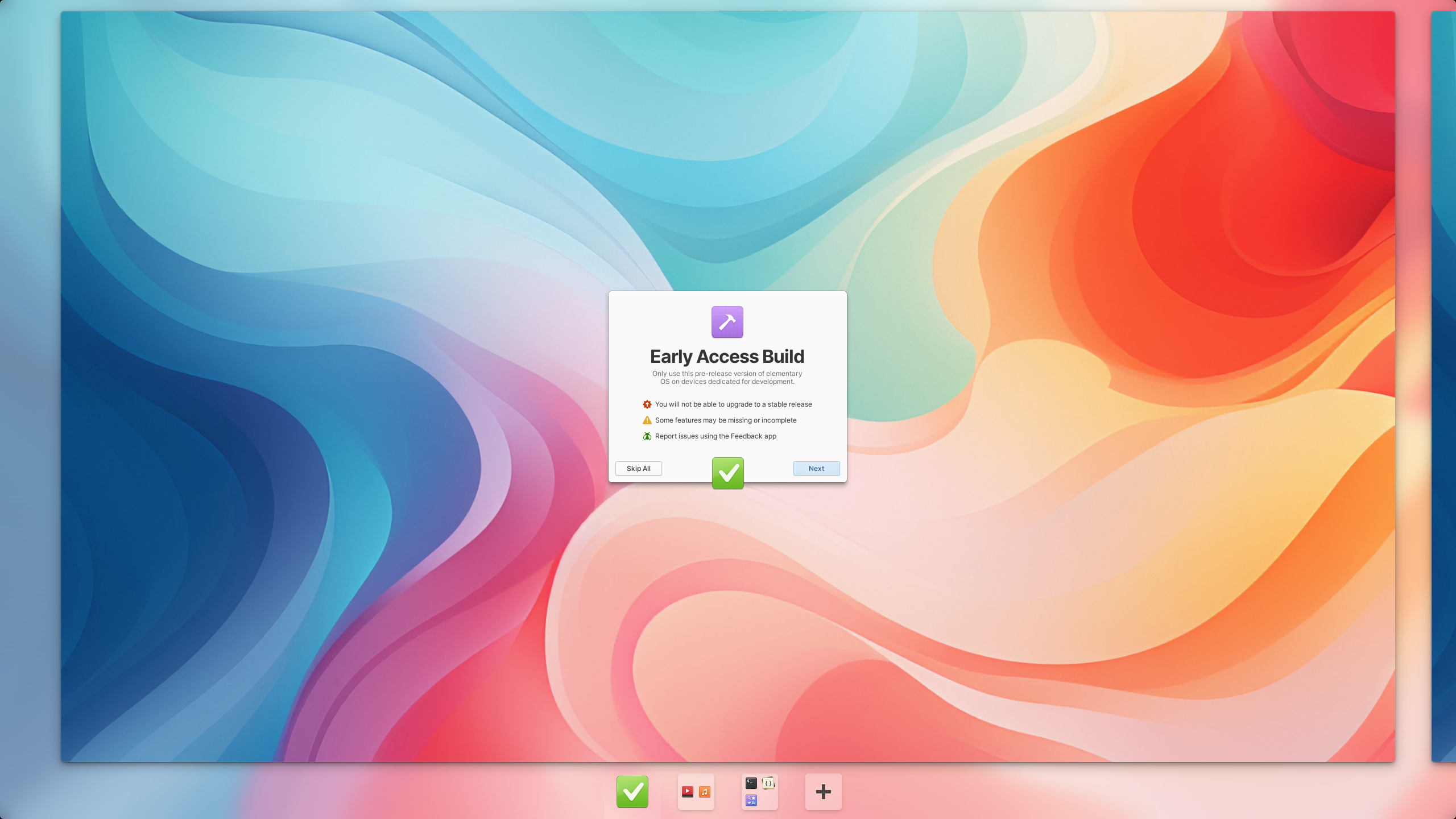
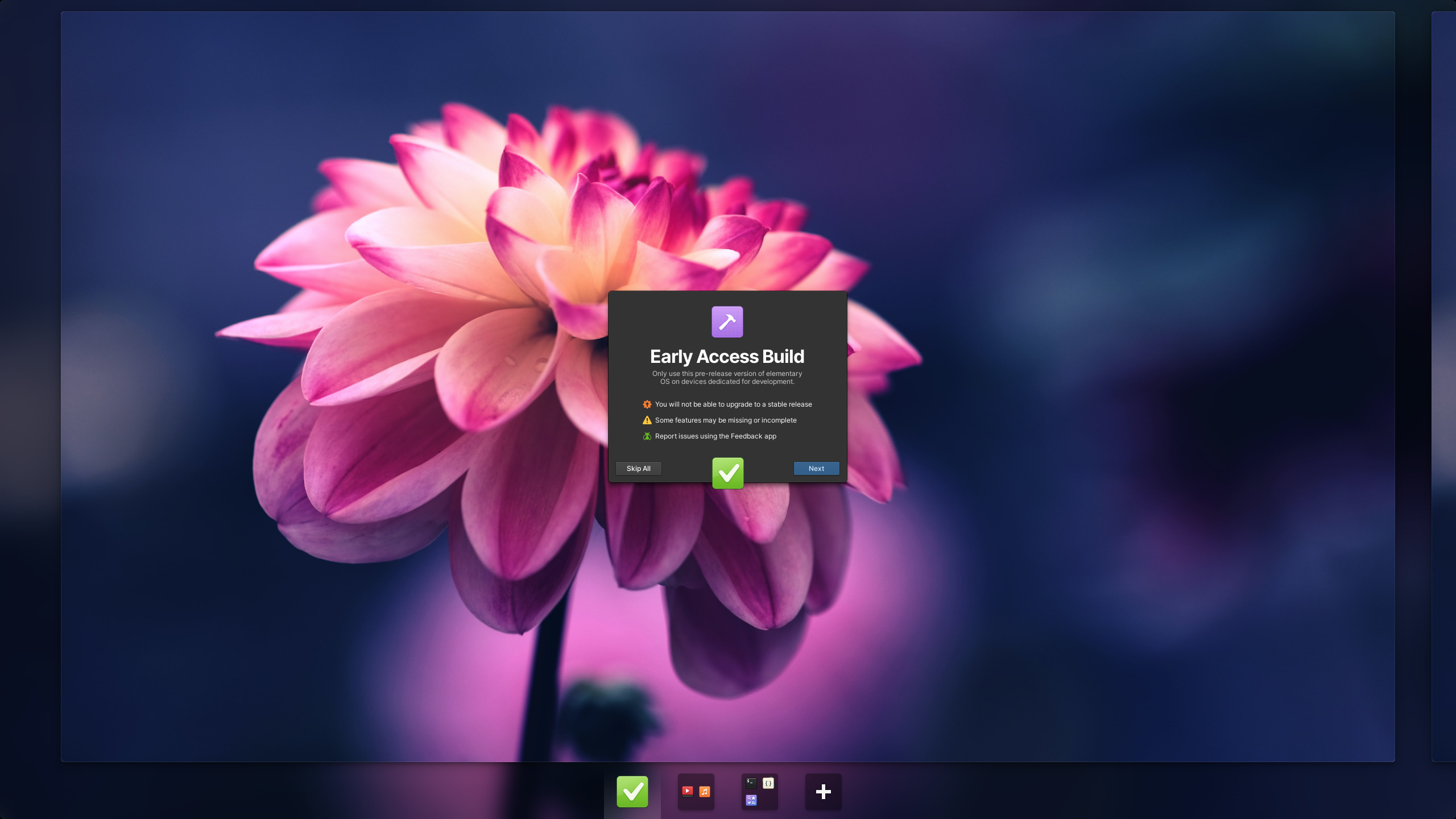
Plus, the Dock has a new multitasking feature: when multiple windows of the same app are opened, selecting that app’s icon in the dock will open a window spread instead of hiding those windows.
And More
The Login & Lock screen now has a smoother fade in animation and will respect your orientation lock settings thanks to Leo. And we’ve improved screen reader support in Initial Setup & Onboarding. Meanwhile, Jeremy has been hard at work on porting Files to GTK 4. And there are plenty of other improvements and new features that are still currently in review.
Updates for OS 7
This month we have just one update for OS 7: a new version of Code. This new release brings a new optional “Fuzzy Finder” plugin which can be launched with the keyboard shortcut Alt + F and can be used to search the files of all opened projects in the sidebar. Plus improvements for dark mode, better save and restore of pane positions, new commandline features, as well as various bug fixes.
Get These Updates
As always, pop open AppCenter on elementary OS 7 and hit “Update All” to get the new version of Code plus your regular security, bug fix, and translation updates.
Thank You
Thanks to all of our supporters, backers, and customers! Your contributions make elementary possible. If you’d like to help build and improve elementary OS, don’t hesitate to Get Involved.
We’re accepting limited sponsors for the elementary Blog. View our public analytics and learn more if you are interested.


